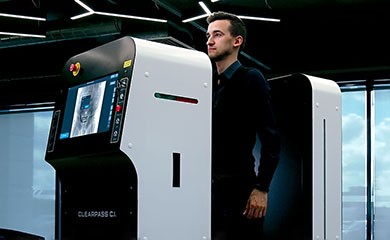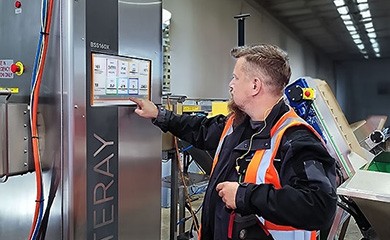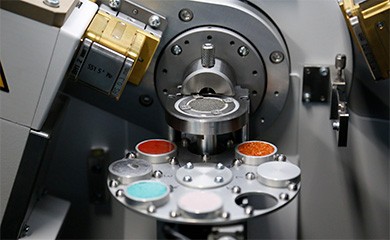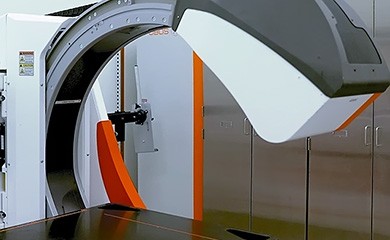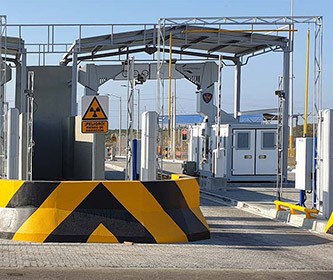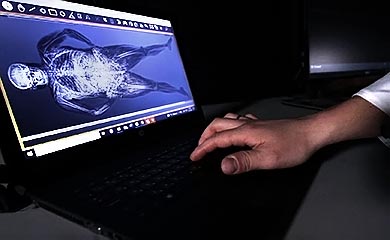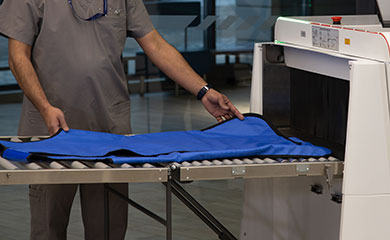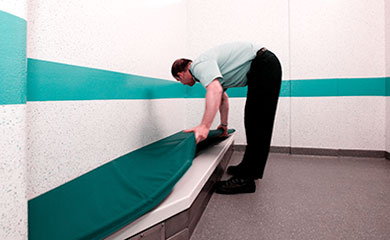
Navigating X-ray Safety: A Comprehensive Guide
Introduction
Embarking on a journey into the world of X-rays, let’s shed light on a topic that concerns us all—our safety. Wilhelm Roentgen’s discovery has woven X-rays into the fabric of both medical diagnostics and security systems. In this guide, we’re not delving into the complexities of radiation but rather ensuring your understanding of X-ray safety is crystal clear. With a focus on security X-ray systems, designed for your protection, join us on a friendly exploration of how these advancements are tailored to keep you safe while maintaining efficiency.
X-ray Basics
X-rays, positioned between gamma rays and ultraviolet light on the electromagnetic spectrum, possess the ability to penetrate materials invisible to the human eye. Categorized as ionizing radiation, X-rays have sufficient energy to ionize atoms, presenting potential health risks. Understanding the difference between ionizing and non-ionizing radiation is crucial for grasping the implications of X-ray exposure.
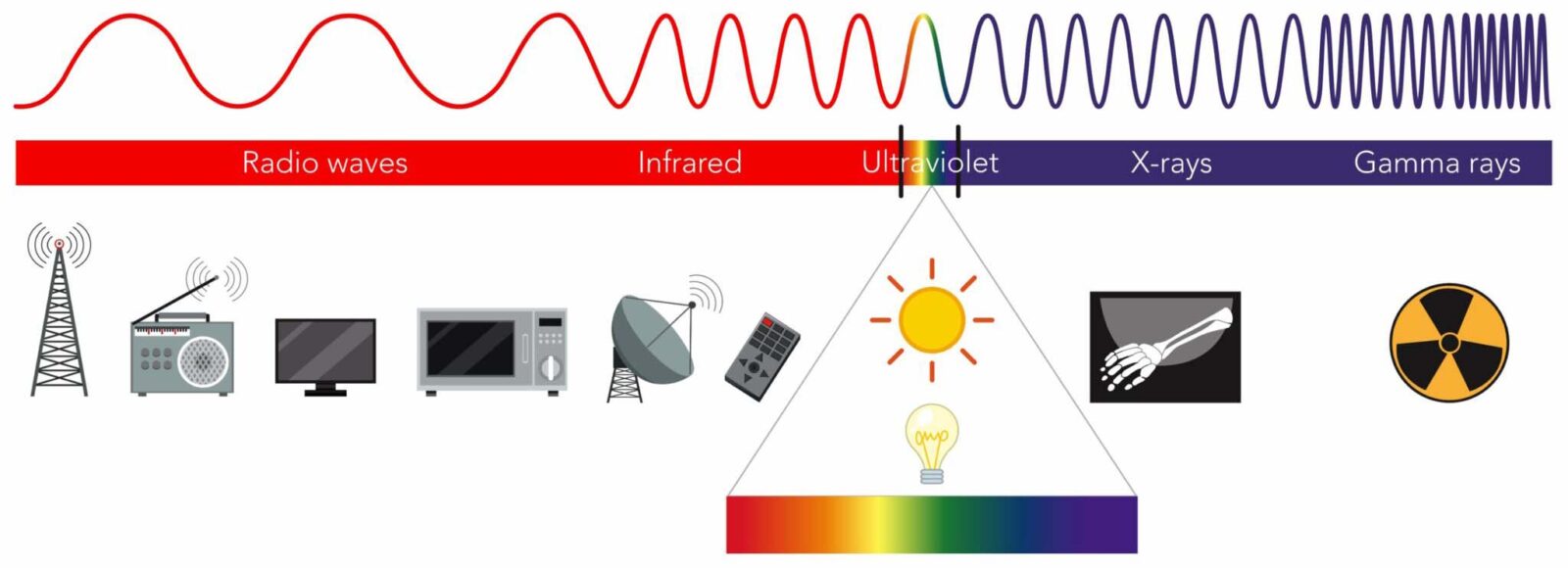
X-rays in the Electromagnetic Spectrum
Health Effects of Ionizing Radiation
Ionizing radiation, exemplified by X-rays, can impact human health, particularly in high doses. The International Commission On Radiation Protection (ICRP) has established guidelines to ensure safety for individuals exposed to radiation. Dose rates are crucial in maintaining safe levels, with the emphasis on the ALARA (As Low as Reasonably Achievable) principle to minimize exposure.
Effective Dose
Effective dose is a quantitative measure of harmful effects of ionizing radiation upon humans.
Roentgen Equivalent Man (rem) and Sievert (Sv) are units of measurement related to the effects of ionizing radiation upon humans
- rem is typically used in the United States
- Sv is typically used in Europe and other countries
Converting rem to Sv:
1 Sv = 100 rem
0.01 Sv = 1 rem
The rem and Sv are large units; dosages to humans are usually discussed in smaller quantities called millirems (mrem) and microrems (μrem), or milliSieverts (mSv) and microSieverts (μSv):
- 1 rem = 1,000 mrem = 1,000,000 μrem
- 1 μrem = 0.001 mrem = 0.000001 rem
- 1 Sv = 1.000 mSv = 1,000,000 μSv
- 1 μSv = 0.001 mSv = 0.000001 Sv
- 1 rem = 0.01 Sv = 10 mSv = 10,000 μSv
Safe Dose Level
Understanding what constitutes a safe dose level is paramount in X-ray safety. Different organizations, including the ICRP and regulatory bodies, have defined safe dose levels to protect individuals from adverse effects. The article discusses safe dose levels in terms of millirems (mrem) and microSieverts (μSv), providing a quantitative measure of harmful effects. References to established safe dose levels for medical procedures and security screenings underscore the importance of adhering to these limits.
On average, Americans receive a radiation dose of about 0.62 rem (620 millirem) each year. Half of this dose comes from natural background radiation. Most of this background exposure comes from radon in the air, with smaller amounts from cosmic rays and the Earth itself. (The chart to the right shows these radiation doses in perspective.) The other half (0.31 rem or 310 mrem) comes from man-made sources of radiation, including medical, commercial, and industrial sources. In general, a yearly dose of 620 millirem from all radiation sources has not been shown to cause humans any harm.
| Procedure | Dose (mrem) |
| X-Rays-single exposure | |
| Pelvis | 70 |
| Abdomen | 60 |
| Chest | 10 |
| Dental | 1.5 |
| Hand/Foot | 0.5 |
| Mammogram (2 views) | 72 |
| Nuclear Medicine | 400 |
| CT | |
| Full body | 1,000 |
| Chest | 700 |
| Head | 200 |
X-ray Safety in Medical Procedures
Medical X-rays, employed for radiography, fluoroscopy, and computed tomography, play a pivotal role in diagnostics. Adverse effects from diagnostic radiation doses are rare, but efforts are made to reduce doses as much as possible. Dose rates are mentioned, highlighting the significance of keeping them within safe limits. References to ICRP guidelines reinforce the commitment to patient safety during medical procedures.
X-ray Security Systems
X-ray Security Systems, particularly in public events, utilize advanced AI algorithms for automatic detection of threats. Dose rates within the safety zone are adhered to, ensuring the public’s safety during screenings. References to ANSI recommendations and adherence to safety standards such as N43.17-2009 and UL 61010-1:2004 Ed.2 underscore the commitment to maintaining safe radiation levels.
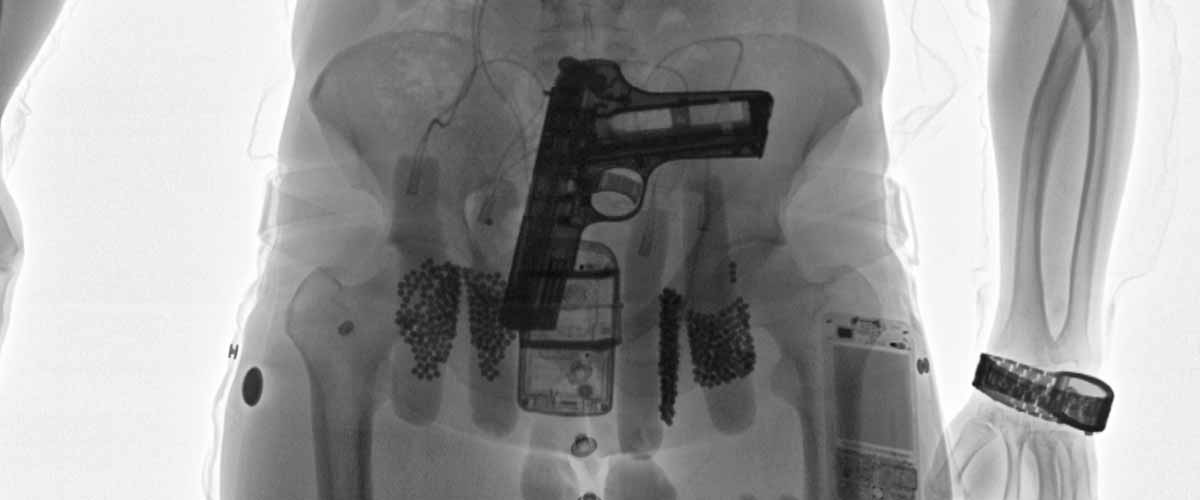
Full Body Scanner X-ray Image
| Type of exposion | μSv | mrem | CONPASS / CLEARPASS Scans |
| Eating a banana | 0.25 | 25 | 1 scan |
| Average daily background | 11 | 1.1 | 44 scans |
| Dental X-ray | 15 | 1.5 | 60 scans |
| Flight from NY to LA | 44 | 4.4 | 146 scans |
| Mammogramm | 720 | 72 | 2880 scan |
| CT | 10,000 (10 mSv) | 1,000 | 40,000 scans |
| Smoking 1.5 pack daily per year | 36,000 (36 mSv) | 3,600 | 144,000 scans |
Differences Between Security and Medical X-rays
Medical X-rays, considered more dangerous due to longer exposure times, necessitate professional supervision. Security screenings benefit from automated software, referencing dose rates within acceptable limits, ensuring efficient and quick processing while prioritizing public safety.
- Low Radiation Doses in Security X-ray Systems
- Efficiency and Quick Processing
- Automated Threat Detection in Security X-ray Systems
- Tailored for Specific Object Inspection
- Customizable Dose Settings
Security X-ray systems, particularly those used in public events, are designed to operate with low radiation doses. This is essential to ensure the safety of individuals undergoing screenings, minimizing the risk of adverse health effects associated with ionizing radiation.
Security X-ray systems are optimized for efficiency and quick processing. Automated software within these systems allows for rapid scanning and detection of suspicious materials without requiring lengthy manual inspections. This efficiency contributes to minimizing the overall exposure time of individuals to X-rays during security screenings.
Advanced AI algorithms in security X-ray systems contribute to automatic detection and indication of prohibited items and threats. This reduces reliance on manual interpretation and enhances the operator’s ability to detect threats with precision. The use of automation can help in minimizing errors and false alarms, ensuring a more accurate screening process.
X-ray security systems come in various forms, including cabinet X-ray systems designed for inspecting baggage, parcels, and containers. This specialization allows for tailored inspections of specific objects without compromising safety. For instance, these systems can be used for screening luggage at airports, ensuring security without unnecessary exposure.
Many security X-ray systems, including the CONPASS SMART Dual View, offer customizable dose settings. Operators can adjust the screening modes and settings between specific dose ranges, ensuring that the radiation exposure is optimized for the specific screening requirements while maintaining safety standards. Let’s gather more advantages of security X-ray systems compared to medical X-rays from the X-ray safety point of view:
Conclusion
In conclusion, this comprehensive guide enhances public understanding of X-rays, emphasizing safe dose levels and adherence to established guidelines. The incorporation of references to recognized safe dose levels underscores the commitment to informed and safe X-ray practices. By promoting awareness and adherence to safety protocols, we contribute to a secure environment for all individuals.



